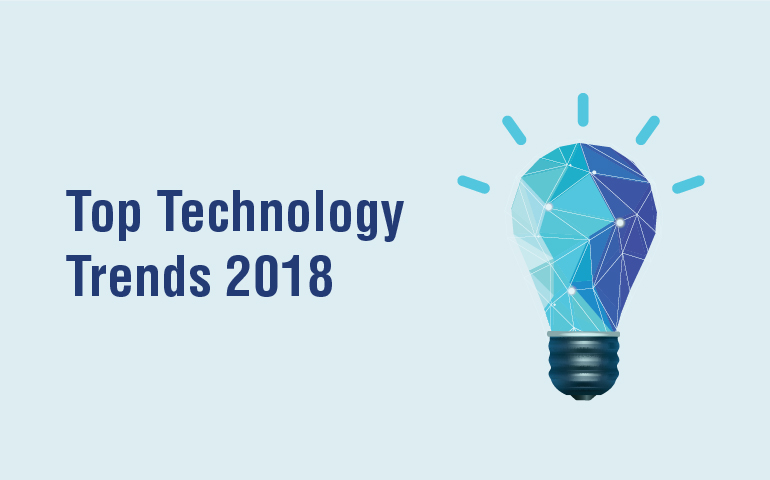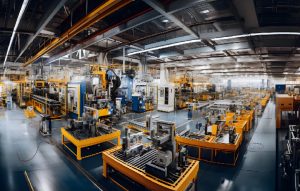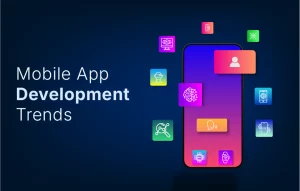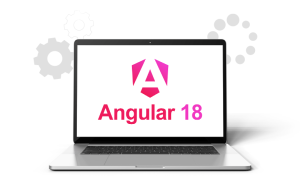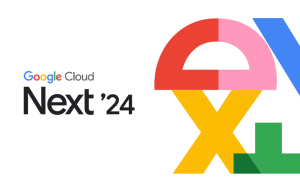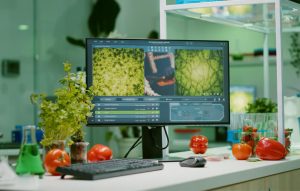A common thought that people have in their minds as the year is about to end is ‘the year ended so soon.’ Well, I think it did too. The time lapsed quickly and technology around us evolved with it. From new mobile phones (hint: iPhone X) to a citizen AI (hint: Sophie), we witnessed many technological advancements.
Now let’s study the technologies that will impact the coming year.
Machine intelligence – moving forward with cognitive computing
Spending on various aspects of MI is already increasing and is projected to reach nearly $31.3 billion in 2019 – Deloitte
Machine learning
Machine learning is a process of autonomously discovering patterns in data which can be used to derive further predictions. Computer systems are developing the ability to improve their performance by interacting with data and pre-set algorithms.
Deep learning
Deep learning involves artificial neural networks that are inspired by the structure and function of a brain. Deep learning can be supervised that requires human intervention to train the progression of the basic models or unsupervised that autonomously refines models based on self-evaluation.
Read more about how deep learning works.
Machine learning and deep learning along with advanced cognitive analytics will help cognitive tools become more accurate to help organizations become more insight-driven.
AI – moving forward with self-learning machines
Artificial intelligence (AI) is capable of performing tasks that usually require human intelligence. AI is becoming an essential component of the analytics efforts. AI is one essential part of a larger, more compelling set of developments in the realm of cognitive computing. AI will enhance decision making, help reinvent business models, and revamp the customer experience.
A recent Gartner survey showed that 59% of organizations are still gathering information to build their AI strategies, while the remainder has already made progress in piloting or adopting AI solutions.
With so much of data-driven traffic, it will soon become impossible for conventional engineering solutions to compute the increasing amounts of data. AI and data science will take the load and offer the ability to extract certain knowledge and patterns from those datasets, ultimately enhancing the decision-making approach.
Blockchain – moving forward with smart contracts
The blockchain is an incorruptible digital ledger of economic transactions that can be programmed to record not just financial transactions but virtually everything of value.” — Don & Alex Tapscott,
Blockchain Revolution.
Blockchain has gained traction in the past few years. It holds the potential to transform many industry operating models. The value of Bitcoin and Ethereum is escalating every day. According to Blockchain Luxembourg S.A, the number of per day Bitcoin transactions is recorded to be 342,237 and is increasing exponentially. Keeping these facts in account, we see a definite growth in adoption of blockchain technology.
While the current hype is around the financial services industry, there are many possible applications including identity verification, title registry, healthcare and supply chain that can leverage blockchain solutions.
Smart contracts are another possibility brought about by blockchain. Smart contracts execute automatically when defined conditions are met. Once agreed-on conditions are met, the contract is then filled. One traditional example of smart contract is paying bonuses when targets are met. Once the contract is sealed, the outputs like payments, deliveries, or any other activities typically defined by a contract are processed. Blockchain, with their consensus-driven nature, makes smart contracts more secure.
Mixed Reality – moving towards an immersive future
Increasingly, augmented and virtual reality is moving beyond gaming. Companies are finding enterprise potential in AR and VR technologies. These technologies when combined will bring a paradigm shift for communication and collaboration, bringing a major shift in user engagement.
The revenues for AR and VR are expected to be more than 90 billion USD and 40 billion USD, respectively by 2020. – Statista
Mixed reality (MR) represents the fusion of the AR/VR and IoT. MR creates new environments that represent both digital and physical objects, and more natural and behavioral interfaces. It enables users to digitally interact with the data. These interfaces make it possible for users to immerse themselves in virtual worlds. It enables users to act upon immersive display of the objects generated by sensors and connected assets simultaneously. Mixed reality apps along with cognitive recognition, processing, and understanding, will transform worker effectiveness and user engagement.
Conversational Platforms – moving towards a screen-less era
Conversational platforms use AI and natural-language processing to do what previously required extensive human labor did or could not be done at all. These platforms will shift the burden of translating intent from users to systems. The reasons for inevitability of a revolution of these platforms are:
- The surge in the demand of Amazon Echo has been notable. Apple launched HomePod in 2017, and Google launched Home speakers in 2016. Voice-enabled devices are gaining popularity.
- Users are happy about not having to open the app whenever needed. With collaborative layers, they can use custom functions with an ease of navigation.
- With a rise in chatbot development services, the number of chatbots and its users is increasing exponentially. Business Insider stated that by 2020, over 80% of businesses are expected to have
chatbot automation implemented.
Users are comfortable seeking answers to questions as simple as ‘how is the weather?’ to more complicated interactions like ‘book a reservation or book a cab’ via conversational interfaces. These platforms will continue to evolve to even more complex actions, such as collecting testimony from crime witnesses and acting on that information by creating a sketch of the suspect’s face based on the sources.
What are you looking forward to?
You must be wondering why we don’t have IoT in the list of the trending technologies as it is one of the hottest one to gain hype in the past few years. It is because IoT has exceptionally matured in the same time. There are certain other developments under IoT that can be seen booming in next year.
You can find top IoT trends of 2018 here.
Let us know what other technologies you are looking forward to in 2018. If you’d like to explore opportunities in these technologies you can talk to our experts.


